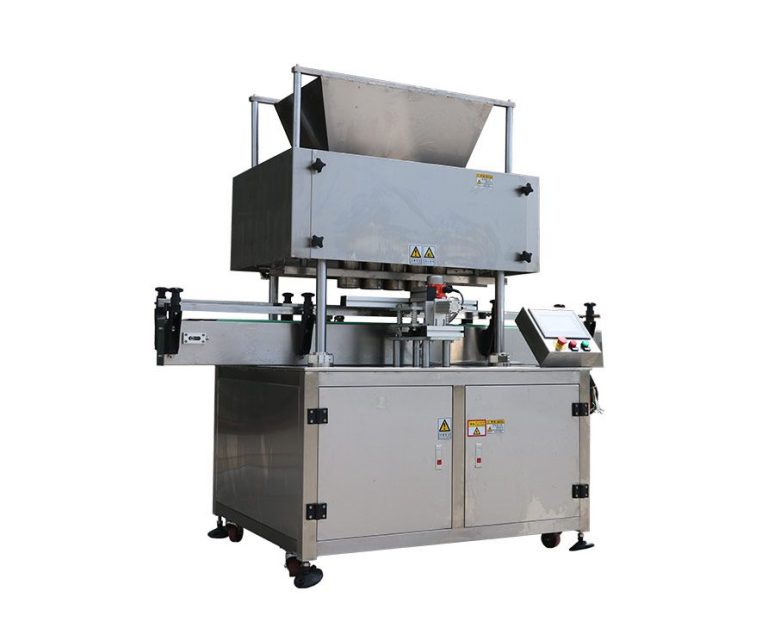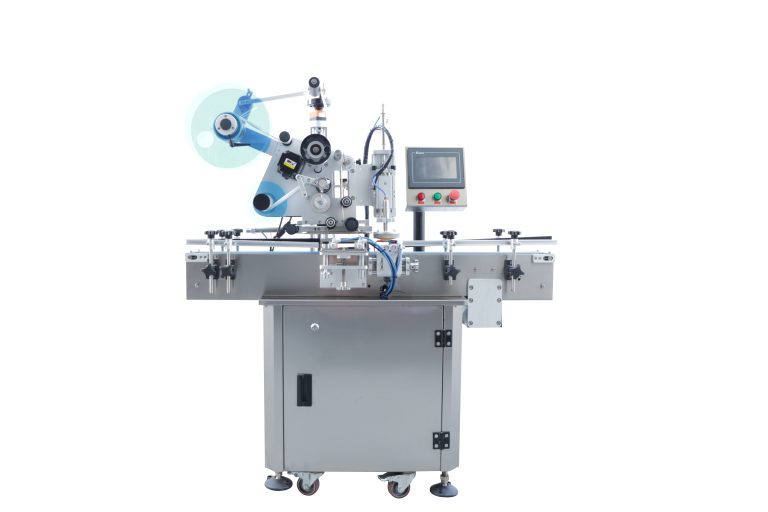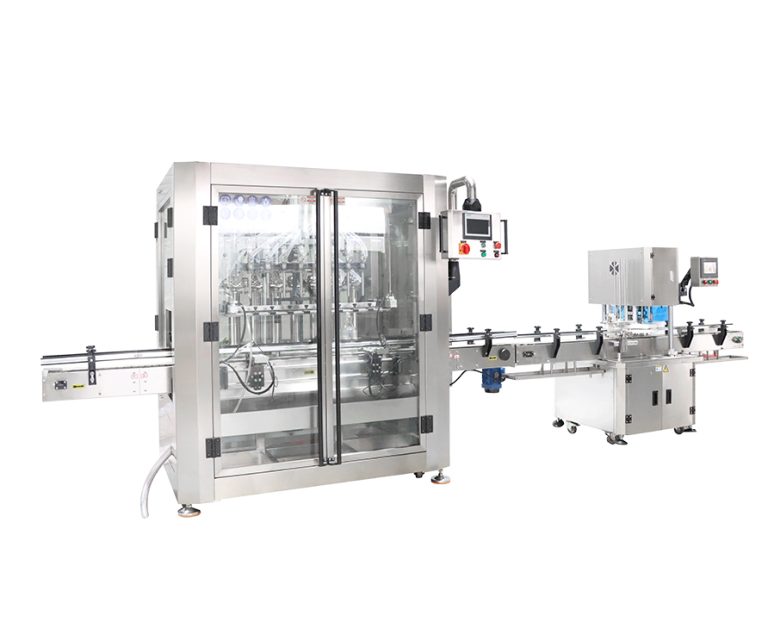Table of Contents
Benefits of Implementing Automated Body Labeling Machines
Automation has become an integral part of many industries, revolutionizing the way tasks are completed and increasing efficiency and productivity. One area where automation has made a significant impact is in the labeling of products, particularly in the food and beverage industry. Body labeling machines have evolved over the years, from manual labeling to semi-automated machines, and now to fully automated systems that offer a wide range of benefits to manufacturers.
One of the key benefits of implementing automated body labeling machines is the increase in efficiency. These machines are capable of labeling a large number of products in a short amount of time, reducing the need for manual labor and increasing production output. This not only saves time but also reduces the risk of human error, ensuring that labels are applied accurately and consistently on each product.
In addition to efficiency, automated body labeling machines also offer improved accuracy. These machines are programmed to apply labels with precision, ensuring that each product is labeled correctly according to the specified requirements. This helps to maintain product quality and consistency, which is crucial in industries where labeling plays a key role in branding and consumer trust.
Furthermore, automated body labeling machines are versatile and can be easily customized to meet the specific needs of different products. Whether it’s labeling bottles, cans, jars, or other types of packaging, these machines can be adjusted to accommodate various shapes and sizes, making them suitable for a wide range of products. This flexibility allows manufacturers to streamline their labeling process and adapt to changing market demands quickly.
Another significant benefit of automated body labeling machines is the reduction in labor costs. By automating the labeling process, manufacturers can eliminate the need for manual labor, saving on labor expenses and reallocating resources to other areas of the production line. This not only reduces costs but also improves overall efficiency and productivity, leading to a more streamlined and profitable operation.
Moreover, automated body labeling machines contribute to a safer working environment. By minimizing the need for manual labor, these machines help reduce the risk of workplace injuries and accidents, creating a safer and more sustainable production environment for employees. This not only benefits the workforce but also enhances the overall reputation of the company as a responsible and safety-conscious employer.
In conclusion, the evolution of automation in body labeling machines has brought about a multitude of benefits for manufacturers in the food and beverage industry. From increased efficiency and accuracy to cost savings and improved safety, automated body labeling machines offer a comprehensive solution to streamline the labeling process and enhance overall productivity. As technology continues to advance, we can expect to see further innovations in automation that will continue to revolutionize the way products are labeled and packaged in the future.
Evolution of Technology in Body Labeling Automation
Automation has become an integral part of many industries, revolutionizing the way tasks are completed and increasing efficiency and productivity. One area where automation has made a significant impact is in body labeling machines. These machines have evolved over the years, incorporating new technologies and features to meet the changing needs of manufacturers.
In the early days of body labeling machines, manual labor was required to apply labels to products. This process was time-consuming and prone to errors, leading to inconsistencies in labeling. As technology advanced, automated labeling machines were introduced, streamlining the labeling process and improving accuracy.

The first automated body labeling machines were simple in design, using basic sensors and mechanical components to apply labels to products. These machines were a significant improvement over manual labeling but lacked the sophistication and flexibility of modern machines.
As technology continued to advance, body labeling machines began to incorporate more advanced features, such as computerized control systems and high-speed labeling capabilities. These advancements allowed manufacturers to label products more quickly and accurately, increasing production efficiency and reducing costs.
One of the most significant advancements in body labeling automation is the integration of robotic technology. Robotic labeling machines are capable of handling a wide range of products and label sizes, making them versatile and adaptable to different manufacturing environments. These machines can also be programmed to apply labels with precision and consistency, ensuring that products are labeled correctly every time.
Another key development in body labeling automation is the use of vision systems. Vision systems use cameras and image processing software to inspect products and ensure that labels are applied correctly. This technology has greatly improved the quality control process, reducing the risk of labeling errors and improving overall product quality.
In addition to technological advancements, the design of body labeling machines has also evolved over the years. Modern machines are more compact and efficient, taking up less space on the production line and requiring less maintenance. Some machines are even capable of self-adjusting to accommodate different product sizes and shapes, further increasing their versatility.
The evolution of body labeling automation has had a profound impact on the manufacturing industry, allowing companies to label products more efficiently and accurately than ever before. These machines have become essential tools for manufacturers looking to streamline their production processes and improve overall efficiency.
As technology continues to advance, we can expect to see even more innovations in body labeling automation. From improved robotic capabilities to enhanced vision systems, the future of body labeling machines is bright. Manufacturers will continue to benefit from these advancements, as they strive to meet the demands of a rapidly changing market.
In conclusion, the evolution of automation in body labeling machines has transformed the way products are labeled in the manufacturing industry. From simple mechanical machines to sophisticated robotic systems, these machines have come a long way in a relatively short period of time. As technology continues to advance, we can expect to see even more improvements in body labeling automation, further enhancing efficiency and productivity in manufacturing processes.
Impact of Automated Body Labeling Machines on Manufacturing Efficiency
Automation has become an integral part of modern manufacturing processes, revolutionizing the way products are produced. One area where automation has made a significant impact is in the labeling of product bodies. Body labeling machines have evolved over the years, becoming more efficient and precise in their operations. This article will explore the evolution of automation in body labeling machines and its impact on manufacturing efficiency.
In the past, labeling product bodies was a labor-intensive and time-consuming process. Workers had to manually apply labels to each product, which was not only slow but also prone to errors. With the advent of automation, body labeling machines were introduced to streamline this process. These machines are designed to automatically apply labels to product bodies with speed and accuracy, eliminating the need for manual labor.
The early versions of body labeling machines were basic and had limited capabilities. They were often slow and could only handle a small volume of products. However, as technology advanced, so did the capabilities of these machines. Modern body labeling machines are equipped with advanced sensors and software that allow them to label products at a much faster rate and with greater precision.
One of the key benefits of automated body labeling machines is their ability to improve manufacturing efficiency. By automating the labeling process, manufacturers can significantly reduce the time and labor required to label products. This not only speeds up production but also helps to minimize errors and inconsistencies in labeling.
Furthermore, automated body labeling machines can handle a much larger volume of products than manual labor. This means that manufacturers can increase their production output without having to hire additional workers. This not only saves on labor costs but also allows manufacturers to meet the growing demand for their products.
Another advantage of automated body labeling machines is their flexibility. These machines can be easily programmed to label products of different shapes and sizes, making them ideal for a wide range of industries. Whether it’s labeling bottles, cans, or boxes, automated body labeling machines can adapt to the specific needs of manufacturers.
In addition to improving efficiency, automated body labeling machines also help to ensure consistency in labeling. By using precise sensors and software, these machines can apply labels with the same level of accuracy every time. This helps to maintain the quality and branding of products, which is essential for building customer trust and loyalty.
Overall, the evolution of automation in body labeling machines has had a profound impact on manufacturing efficiency. These machines have revolutionized the way products are labeled, making the process faster, more accurate, and more cost-effective. As technology continues to advance, we can expect to see even more innovations in automated body labeling machines, further improving manufacturing processes and driving greater efficiency in the industry.






